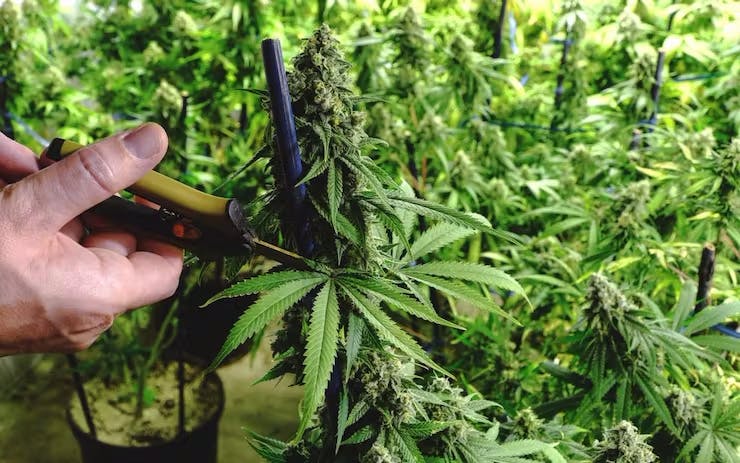
Credit: Getty Images/iStockphoto | Copyright: OpenRangeStock
Hop latent viroid, or HLVd, is more widespread globally than previously thought. Concern has spread from growers to business leaders and investors because of the financial impact HLVd is having on the industry, as evidenced by recent articles in MJBizDaily and the Wall Street Journal.
HLVd is primarily spread through mechanical transmission and any plant is susceptible to HLVd when placed in contact with other infected plants or wounded with infected tools. However, seeds produced from HLVd-free parents do not carry the viroid.
The viroid travels from an initial infection site to the roots, then back up to places in the plant that are actively growing and requiring nutrients from the roots. This results in lower yield, lower potency, small buds, misshapen leaves, discoloration, and brittle stalks and branches.
When grown from clean seed stock, seed-grown plants can contract HLVd in the vegetative stage or later from using infected tools to prune and defoliate. They are not susceptible to the same depression in yield as clonal cuttings suffering from HLVd because the viroid takes a while to infect the entire plant and become symptomatic.
Here’s what we know about HLVd
- In 2019, we worked with Glass House Farms to discover HLVd, the scientific reason behind “dud” plants. A second study in 2019 confirmed the discovery.
- In 2021, Dark Heart Nursery discovered >90% of California grow sites tested positive for HLVd.
- Now, Zamir Punja PhD, Professor of Plant Biotechnology at Simon Fraser University, found that HLVd can be found in plant material even 4 weeks after harvest in dried leaves and roots. He estimates that 40% of flower in dispensaries have HLVd.
How you can prevent HLVd in your facility
- Use well-established biosecurity management procedures such as cleaning clippers before and after use with each individual plant.
- Follow phytosanitary methods to ensure every plant you bring into your facility is pest and disease free.
- If detected, move infected plants away from others and cull immediately.
- Source your genetics from clean parent stock.
Start Clean, Grow Clean
It is important to source your genetics from a reliable provider that follows phytosanitary methods to maintain their parent stock. If any parent stock (clonal mothers or seed production) is infected, the resulting plants will also be infected. Punja’s recent findings concluded that mother stock suffering from HLVd will transmit it to 100% of its clonal cuttings.
Starting with clean stock is ultimately the best preventative solution to this Billion-Dollar Threat. Any plant is susceptible to HLVd when placed in contact with other infected plants or wounded with infected tools; however, seeds produced from HLVd-free parents or clonal cuttings from HVLd-free mothers inherently do not carry the viroid.
At Phylos, we adhere to strict phytosanitary methods in our breeding program and in seed production – resulting in HVLd-free plants. Our rigorous testing procedures include testing for HLVd in our parent stock so you can be confident that you’re starting clean with every seed you sow.
Simply put — Phylos Production-Ready Seed™ is like having a virus-free mother room in a single packet of seeds.
For more information or to shop Phylos Production-Ready Seeds, visit our seed shop.